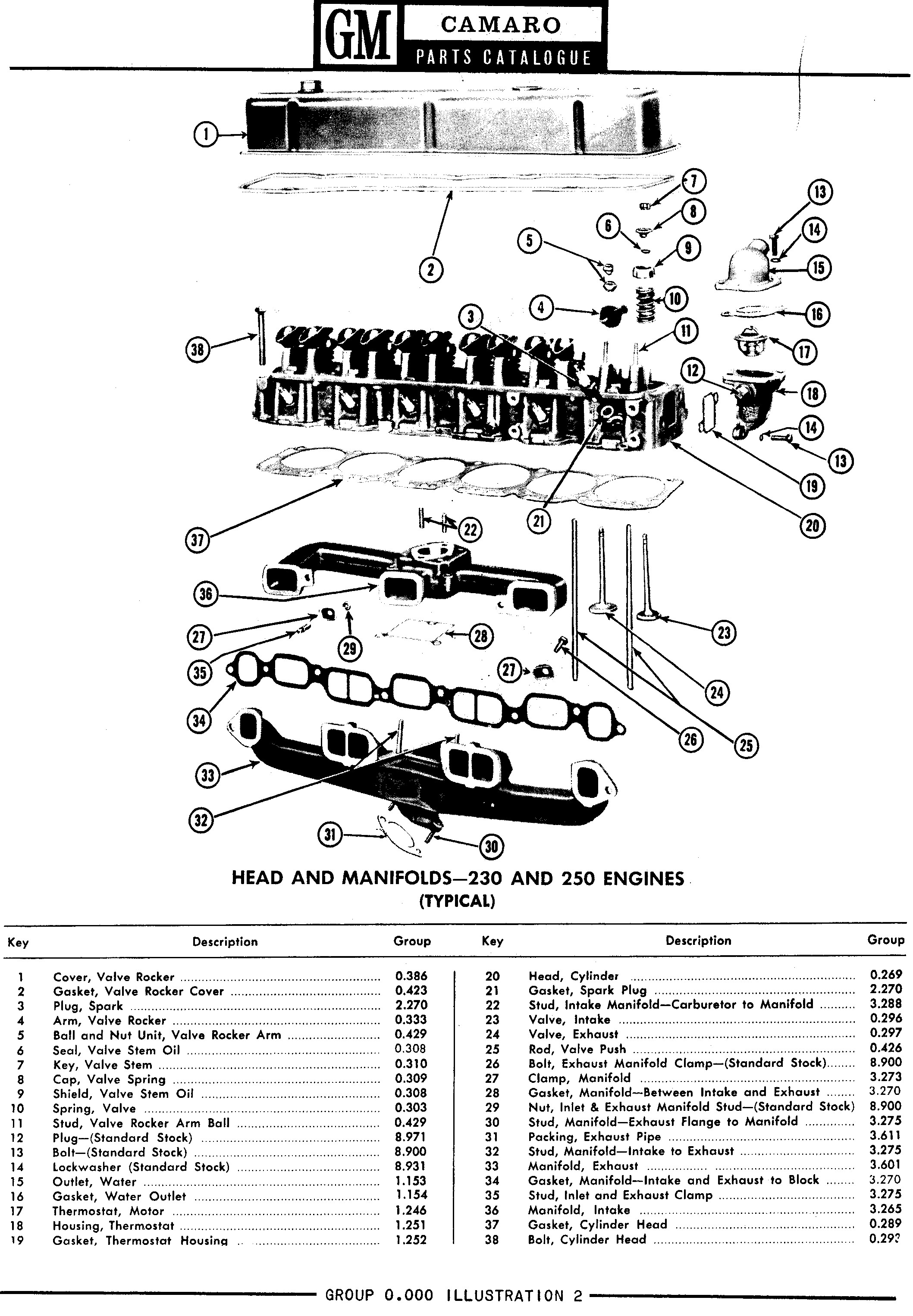
|
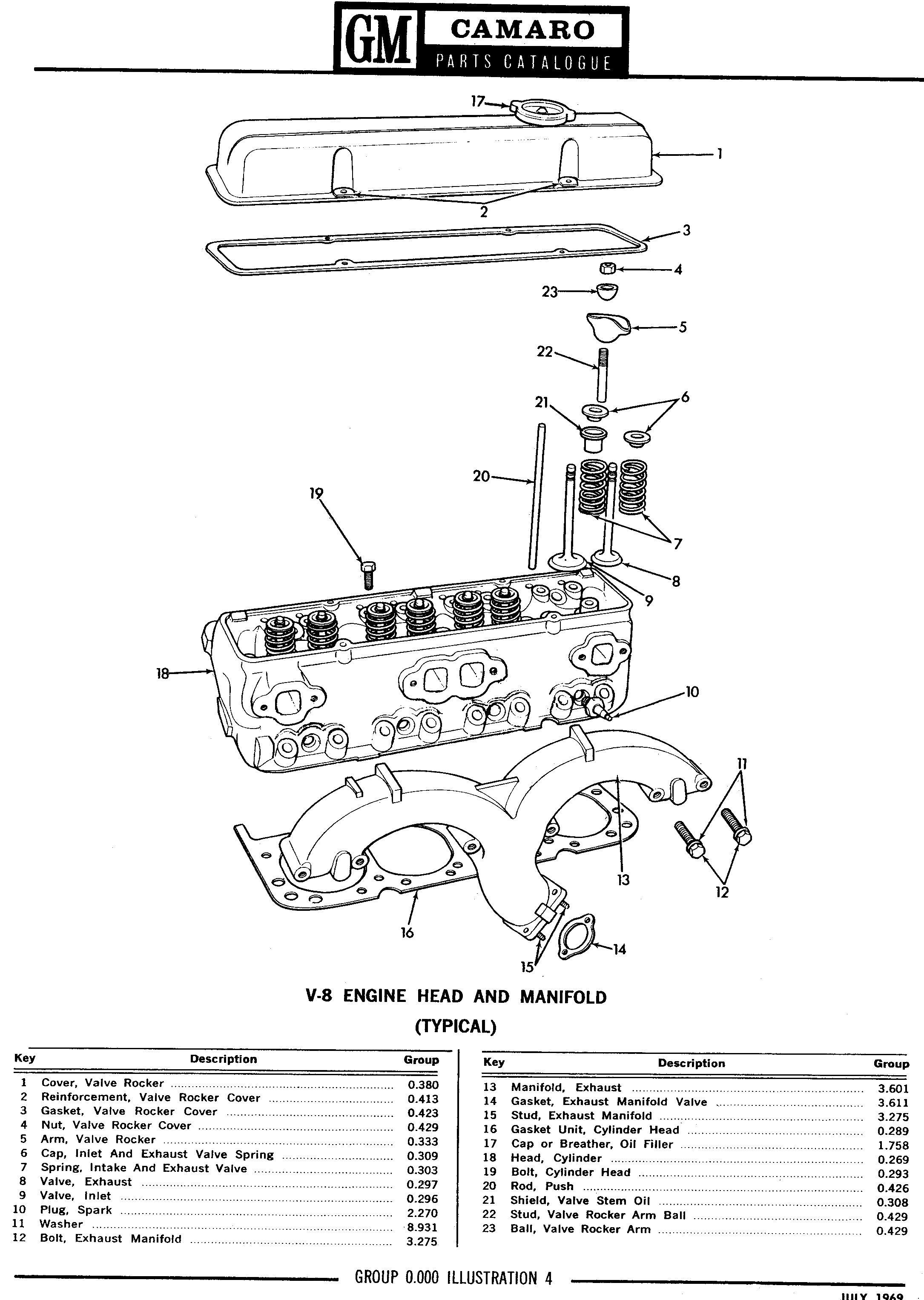
|
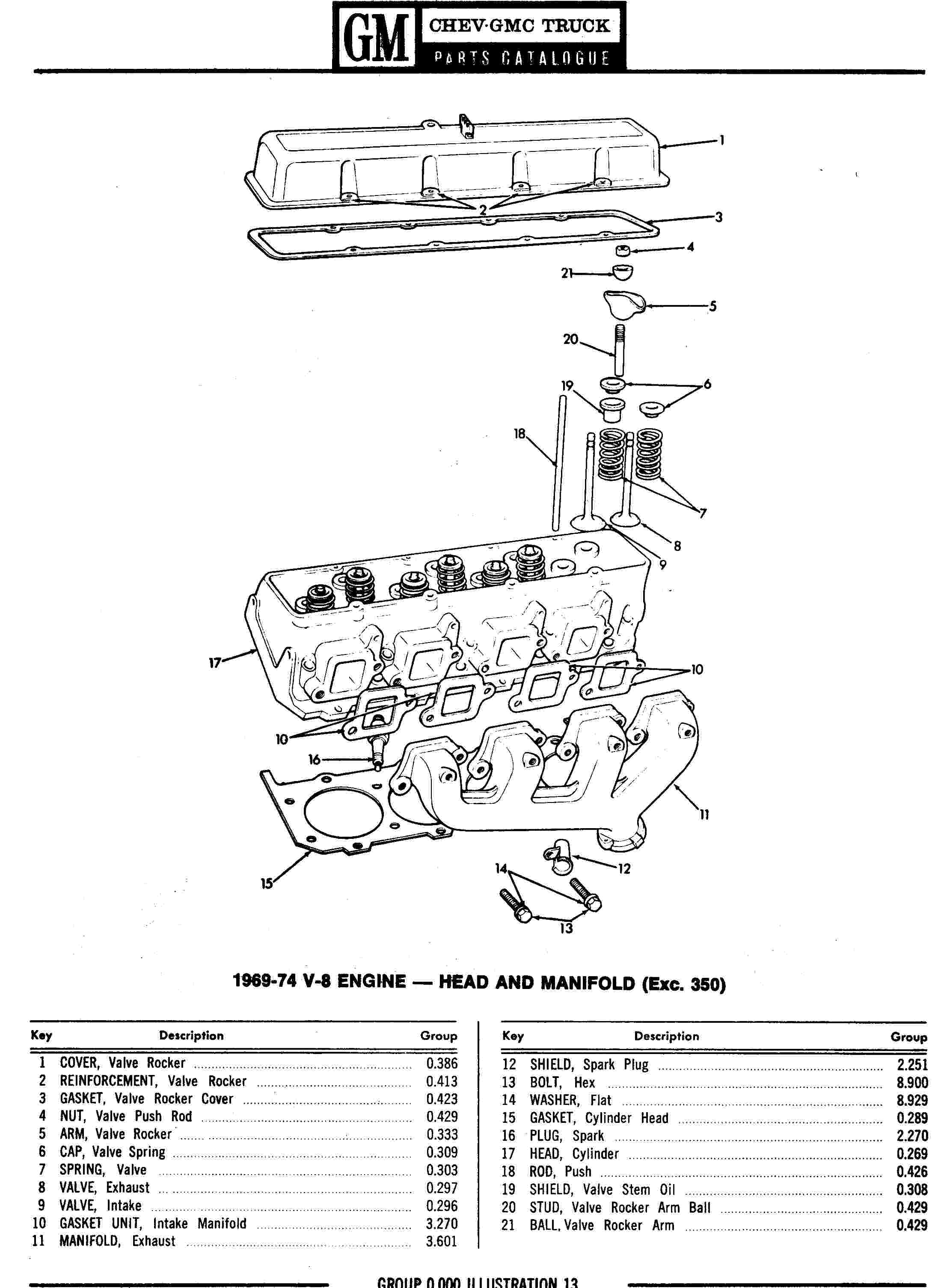
|
| C R G | CRG Reports | Exterior | Engine | 1967 Model ID |
| Numbers Decode | General Info | Interior | Transmission | 1968 Model ID |
| Drivetrain Decode | Options | Underhood | Chassis | 1969 Model ID |
CRG Research Report - © 2023, Camaro Research Group
1967-69 Camaro Cylinder Heads
Primary Author -|
Reviewed by the CRG Last Edit: 6-Dec-2023 Previous Edits: 9-Nov-2023 Original Release: 01-Nov-2023 |
The three different engine designs used in first generation Camaros all required different cylinder heads: the in-line six-cylinder (L6), the small block V8 (SBC), and the big block V8 (BBC). Additionally, there were many different castings and two casting materials (cast iron and aluminum). Horsepower was directly affected by the size of the valves in the cylinder head and the size of the combustion chamber. Higher performance heads used larger valves.
Through the late 1960s there were some changes to the spark plugs bosses, but they will not be discused in this report.
|
|
|
At least 19 different cylinder head castings were used on first generation Camaros. Casting numbers could be used for multiple years or could change during the production year. It is common practice when talking about cylinder head casting numbers to only use the last 3 digits of the casting number.
The casting numbers and casting dates are hidden when the valve covers are installed. Most SBC heads will have a casting symbol on the end of the head that can help with identification. Oval port BBC heads do not have an external casting symbol. Rectangle port BBC heads do have a casting symbol on the end of the head (shown below).
Casting dates were included on each part. The casting number and the casting date on L6 and BBC heads will typically not be in close physical proximity to each other. SBC heads in the late 1960s will usually have the casting number and casting date close to each other - between two intake valves. Casting dates normally consist of a letter for month (A through L), one or two numbers for day of the month and a number for the last digit of the calendar year.
There is one exception to the normal block casting date convention. When the foundry was evaluating a casting process change, the foundries used special codes to indentify the test parts. Evaluation castings made at Flint received an M month code and evaluation castings at Tonawanda would typically have an X cast on the part. After evaluating the parts, the heads would either be destroyed or released into production. There is no way to determine the date an "M"-coded part was poured.
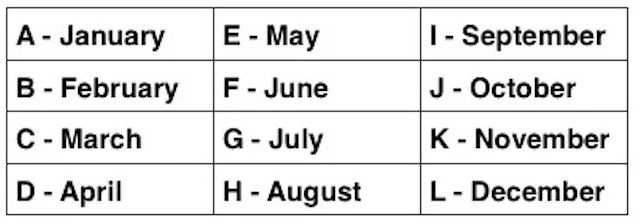
|
|
|
|
Cast iron heads (as well as blocks, intakes, water pumps, etc.) used at the Tonawanda engine assembly plant were cast on-site. Parts cast at Tonawanda usually have a "T" somewhere on the part. BBC oval port heads will usually have PASS (passenger) cast somewhere on the head, typically under the valve cover and on the underside of the head. BBC cast iron rectangle port heads will usually have HI-PERF cast on the part in the area under the valve cover. Some later cast heads have been observed with the HI-PERF casting but did not have rectangle ports.
Cylinder heads for Flint assembled engines were cast at the Saginaw foundry.
BBC aluminum heads were cast at the Winters facility and will have a "snowflake" casting mark/symbol (see below). Casting dates are usually not visible under the valve covers, but on the underside of the head, hidden when the heads are on the engine block.
This list shows observed usages.
| Model Year | RPO | Disp/HP | Intake/Exhaust Valve Size | Combustion Chamber Size | Casting Number | Notes | |||||
|---|---|---|---|---|---|---|---|---|---|---|---|
| 1967-1969 | L26 | 230/140 | 1.72/1.50 | ? | 3864886 | ||||||
| 1967-1969 | L26 L22 |
230/140 250/155 |
1.72/1.50 | 74.000 | 3927763 | ||||||
| 1967-1969 1969 |
LF7 L14 |
327/210 307/210 |
1.72/1.50 | 74.660 | 3876775 | ||||||
| 75.340 | 3917293 | Observed in late 67 cars | |||||||||
| 69.625 | 3927185 | ||||||||||
| 1967-1968 | L30 L48 |
327/275 350/295 |
1.94/1.50 | 63.305 | 3890462 3917291 |
291 usage started in mid-67 | |||||
| 1969 | LM1 L65 |
350/255 350/250 |
1.94/1.50 | 76.260 | 3932441 | Used in some late 1968's | |||||
| 1969 | L48 | 350/300 | 1.94/1.50 | 63.305 | 3947041 3927186 |
||||||
| 1967-1968 | Z28 | 302/290 | 2.02/1.60 | 63.305 | 3890462 3917291 |
291 usage started in mid-67 | |||||
| 1969 | Z28 | 302/290 | 2.02/1.60 | 63.305 | 3927186 | swirl polished valves | |||||
| 1967 | L35 | 396/325 | 2.06/1.72 | 98.427 | 3904390 | 215 had added boss for temp sending unit |
|||||
| 100.967 | 3909802 3917215 |
||||||||||
| 1968 | L35 L34 |
396/325 396/350 |
2.06/1.72 | 100.967 | 3917215 | * 063 observed on one late 68 car |
|||||
| 1969 | L35 L34 |
396/325 396/350 |
2.06/1.72 | 100.967 | 3931063 | ||||||
| 3964290 | late 69 usage | ||||||||||
| 1967-1969 1969 |
L78 L72 |
396/375 427/425 |
2.19/1.72 | 106.80 | 3904391 | mid 67 usage | |||||
| 3919840 | late 67-69 usage | ||||||||||
| 2.19/1.88 | 109.037 | 3964291 | late 69 usage | ||||||||
| 1968,1969 | L89 | 396/375 | 2.19/1.84 | 106.80 | 3919842 | L89, aluminum | |||||
| 1969 | ZL1 | 427/430 | 2.19/1.88 | 118.00 | 3946074 | aluminum head and block | |||||
The 230 and 250 cubic inch L6 engines for 1967 to 1969 Camaros used the same basic cylinder head design. So far, only the 3864486 and 3927763 casting numbers have been observed on L6 cars. Three other heads could have possibly been used, but are unverified: 3824437, 3872708, and 3895052. These had a combustion chamber size between 72 cc and 74 cc. The casting number is on the top of the head, under the valve cover. There will be some numbers cast on the passenger side of the head between the spark plugs, but these are not reliable for identification.
The head design is unlike the small block and big block heads. The intake and exhaust ports are both on the the drivers side of the head whereas the SBC and BBC both have crossflow design heads. Intake valves share the siamesed intake ports of the 1/2, 3/4 and 5/6 cylinders. The spark plugs are on the opposite side of the head. The intake valve size is 1.72 inches and the exhaust valve is 1.50 inches. The heads can be machined to accept larger intake valves to increase performance.
|
|
|
|
Small block cylinder heads shared the same basic design all three years, although there were changes in the castings and the size of the combustion chamber. The same casting number could be machined for different size intake and exhaust valve for different applications.
As mentioned above, casting symbols were included on the end of SBC cylinder heads. This made identification easier without removing a valve cover.
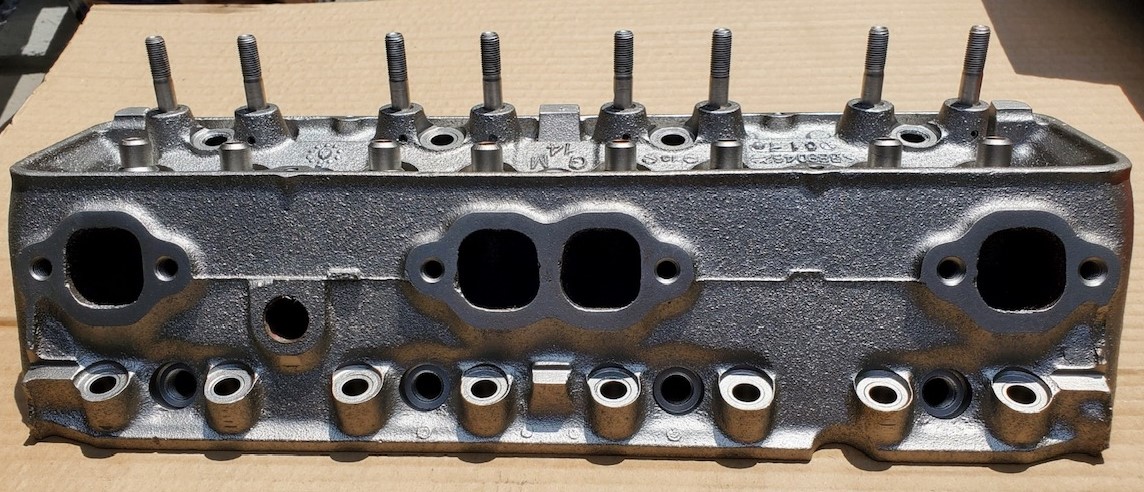
|
All three years and applications used press-in rocker arm studs. This was not a good thing for high performance. Serious racers would either install pins to keep the rocker arm studs from pulling out or have the heads machined to accept screw in studs.
|
|
|
|
|
|
|
|
|
The lower performance engines like the LF7 (327/210 hp) and L14 (307/200 hp) engines used the smaller 1.72 intake valves. For the 1967 model year production, the 3876775 head was used for the LF7 engines. The 3917293 head was used for LF7 engines in 1968, though a few late 67 engines have been observed with it. The 3927185 head was used for LF7 and L14 (307/200 hp) heads in 1969.
The L30 (327/275 hp) and L48 (350/295 hp) engines used the 1.94 intake and 1.50 exhaust valves. The 67 engines used casting number 3890462 until about March or April of 1967. Z28 engines used the same casting number, but with larger 2.02 intake and 1.60 exhaust valves. The "462" heads have the double hump or "camel hump" casting symbol on the end of the head. Late 1967 L30, L48, and Z28 engines received 3917291 heads (with the appropriate valve sizes) and used the same casting symbol. Late in the 1967 model year, a boss for the temperature sending unit was added. Some documentation shows this started with the "291" castings, but at least one case of an April "462" head with a drilled temperature sending boss has been seen.
The "291" heads continued to be used into the 1968 model year on the L30, L48 and Z28 applications
|
|
The head was redesigned for the new alternator mounting in 1969; three holes were machined and tapped at the end of each head. The 3947041 was a Tonawanda casting that was used in the L48 engines built at Tonawanda. The 3927186 head was used for the Flint-built L48 and Z28 applications. There is one confirmed instance of a car receiving a "186" and a "041" head in an unusual case of head castings being interchanged between the engine plants. A double hump casting symbol was used on the end of the head, but the size of the symbol was reduced in height. Special swirl polished valves were used for all Z28 heads in 1969.
The easiest way to visually tell the diffference between a 2.02/1.60 and a 1.94/1.50 head is to look at the space between the intake and exhaust valve. The 2.02 heads will have the valves very close together, and you will not be able to fit a dime between the valves. All 2.02 valve heads have the intake valve unshrouded or machined for better flow. This was an extra machining process in the combustion chamber and is easy to spot.
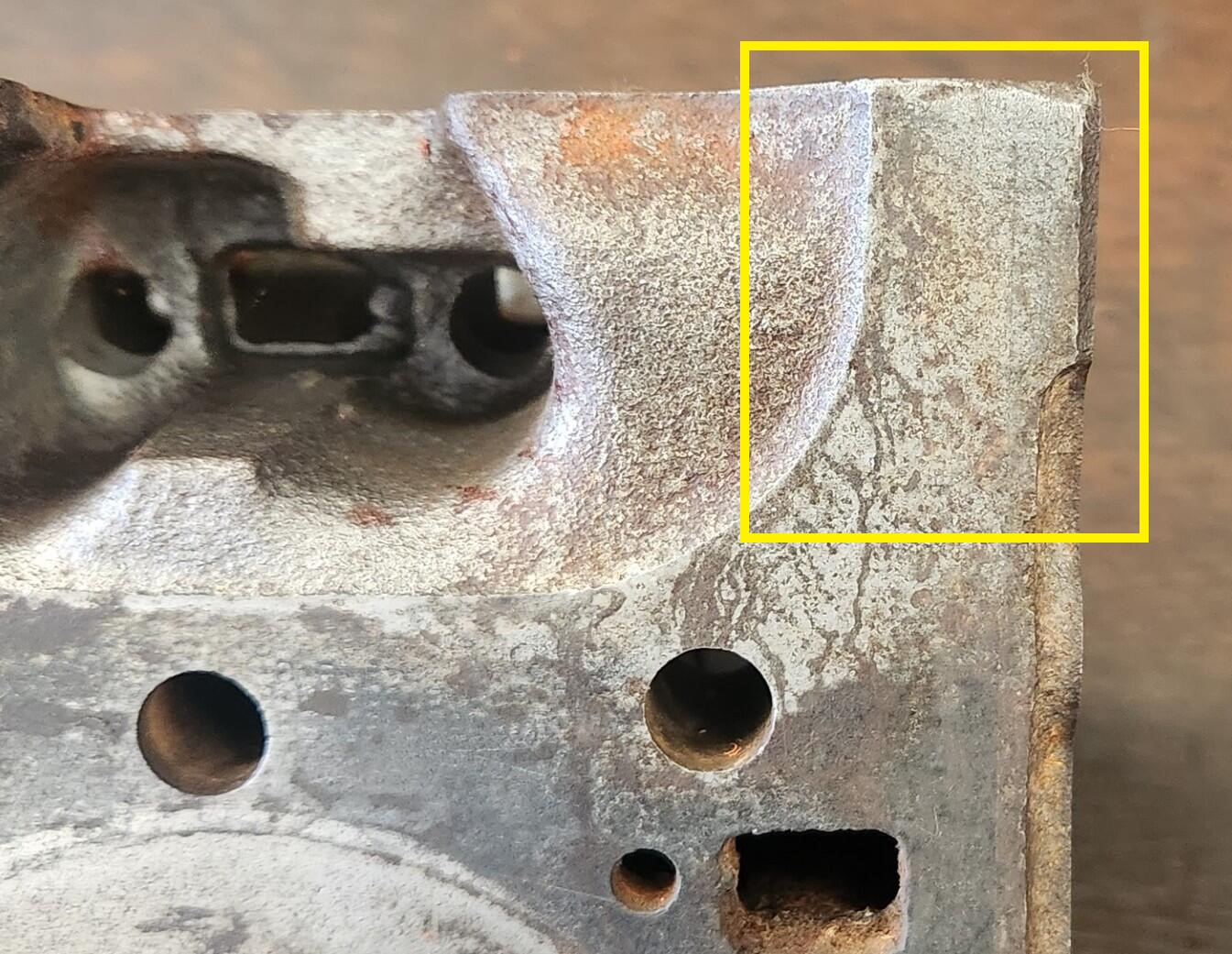
|
An important note from Jerry MacNeish. "Never buy a used set of SBC cylinder heads unless they still have the raised machined surface on the outer edges of the deck surface of the head. If it is gone, this means the head was machined to death. You will have issues with piston to valve clearance and you may have issues with the intake manifold fitting properly."
Cast Iron
There are two types of cast iron BBC heads, oval port and rectangle port. Oval port heads were used for standard BBC applications and rectangle port heads were used for high performance applications. Rectangle port heads flow better at higher RPMs (generally above 5000).
Oval port heads will only have a straight line casting mark on the end of the head, i.e. there is no raised symbol. BBC cast iron rectangle port heads will usually have HI-PERF cast on the part in the area under the valve cover and a single bump or "hump" extending above the straight line casting line. See pictures below.
|
The 396 engine was released the Camaro in January 1967. Initially only the L35 (396/325 hp) was available. This engine used oval port cast iron heads, casting numbers 3904390 and 3909802. Around May of 1967, a boss was added for a temperature sending unit and the casting number changed to 3917215.
The L34 (396/350 hp) version of the 396 was released for the 1968 model year. It was also used in 1969. The L34 applications used the same head as the L35. Casting number 3931063 was used for both the L35 and L34 for 1969. Some 063 heads have been observed on very late 1968 model year engines. Late 69 cars received the 3964290 oval port heads. The 290 head was also used into the 1970 model year.
|
|
|
The L78 (396/375 hp) engines was released for Camaros in March of 1967. These used rectangle port cast iron heads with casting number 3904391. Casting number 3919840 was released around May 1967. The "840" heads continued to be used for 1968 and most of 1969, but were replaced by the 3964291 casting number for very late 1969 Camaros. This was due to the extension of production into November of 1969.
|
|
|
|
|
Aluminum
Rectangle port aluminum BBC heads with casting number 3919842 were used on the 396/375 hp L89 engines in 1968 and 1969. These used the same size combustion chamber and the same size intake valve as the cast iron rectangle port heads. But the exhaust valve was larger (1.84 inches) and aluminum heads included venturis in the exhaust ports. There were two versions of the 842 aluminum head. The first version had one pipe plug on each end of the head, through about May or June 1969. After that, there was only one plug.
Cars with Regular Production Option (RPO) L89 are very rare with only 272 made for 1968 and 311 for 1969.
|
|
|
The ZL1 engines in 1969 received heads with casting number 3946074. These used a new open chamber design, with a larger combustion chamber (118 cc) compared to earlier closed chamber heads. They used the same size intake valve (2.19) as rectangle port heads, but used a larger (1.88) size exhaust valve. The "074" heads were also used into the 1970s.
The "842" and "074" castings both used the "Snowflake" Winter casting logo, but the logos are not the same size and shape.
|
|
This was a group effort of several CRG members. The author wants to thank all involved for their assistance with this report and the use of their photos. Sources used include Alan Colvin's Chevrolet By the Numbers 1965-69 book, Jerry MacNeish's fact books, Chevrolet parts manuals, and observations and data provided by CRG members.
You can help serve to improve any future revisions of this report. We would appreciate notes of verified differences or other things that you feel are pertinent on this subject. Digital photos are greatly appreciated as well, since they serve to expand our knowledge of what is and is not correct for these cars.
|
|